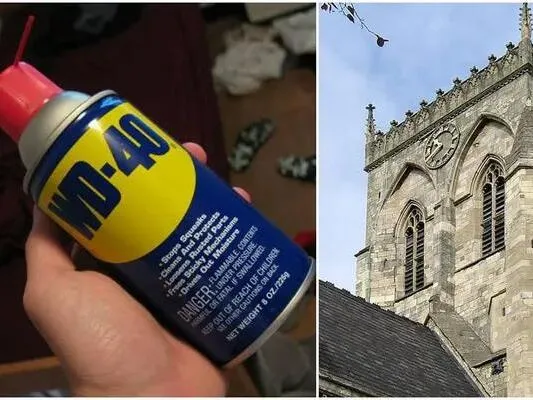In a world where time is always at our fingertips, thanks to smartphones and watches, it’s easy to forget there was a time when clocks were massive structures that ruled the hours for entire towns. Before wristwatches and phones, cities relied on the chimes of bell towers to signal the passing hours, keeping everyone on schedule.
In Grimsby, a town in eastern England, a historic clock that once served as the town’s main timekeeper has been stuck in silence for over a decade. The clock, perched high on the central tower of Grimsby Minster—a church with roots dating back to the 12th century—stopped working precisely at 12:02 twelve years ago. Built in 1365, the tower had long been a central part of the community’s daily rhythm. But time stood still when the clock broke down, and the church was left facing a hefty repair bill.

Back in 2012, experts, including those who had worked on London’s Big Ben, were called in to assess the damage. Their estimate? A staggering £40,000 to £50,000 ($53,250 to $66,600) to get the old clock ticking again. The reason for the high cost was simple: restoring the historic clock would require extensive scaffolding and delicate repairs.
Faced with this huge financial burden, the church feared it might need to launch a large-scale fundraiser. But, as fate would have it, salvation came from an unexpected place. Two local volunteers, Rick Haywood, a 47-year-old cheesemaker, and Jay Foley, a 15-year-old student, were performing routine maintenance on the church bells when they decided to take a closer look at the clock.

“We did not think we could do any more damage,” Haywood told The Sun. “We found various dead pigeons gumming up the bearings. Some of the bearings were very dry.”
The pair noticed that the clock’s gears were out of alignment, likely due to years of wear and tear. Foley added, “The minutes, hours, and seconds all have separate sections, which were out of order. We got the dead pigeons out and it slowly ticked along after we greased it and cleaned it out.”
Armed with nothing more than two cans of WD-40 and a tub of grease, the duo got to work. After cleaning out the pigeons and greasing the old gears, they gave it a test run. To their amazement, the clock began to tick once more.
“We gave it grease and WD-40 and managed to get it running,” Haywood said. The total cost of their repair? Just £6.
The clock is still running today, albeit two minutes slow, but the church couldn’t be happier with the results. The warden of Grimsby Minster expressed his gratitude, explaining, “It’s amazing because you would not believe how much hassle you get when a church clock is not working.”
For Haywood and Foley, saving the church £50,000 was a huge accomplishment, and they’re proud of their work. “We saved them at least £40,000 so I am hoping for a meal invite,” Haywood quipped.
The company working on Big Ben's restoration quoted £50k to repair Grimsby Minster's clock which had been broken for 12 years. The local cheesemaker and a student cleaned out the dead pigeons, bought a can of WD-40 and a tub of grease and managed to fix it themselves. pic.twitter.com/CtemLy3HnB
— Ant Stephen (@AntStephen) February 25, 2022
The story of how a cheesemaker and a student managed to fix a clock that had been broken for twelve years using just a couple of cans of WD-40 is likely to be told in Grimsby for years to come. It’s a reminder that sometimes, the solution to even the most expensive problems can be found with a little bit of creativity and a lot of elbow grease.
There might not be a verse in the Bible about getting a second opinion on a repair quote, but this lesson will surely stick with the people of Grimsby Minster for quite some time.




GIPHY App Key not set. Please check settings